Artist's impression of the Dawn spacecraft studying Vesta and Ceres. Image Credit: NASA
One of NASA’s most audacious space missions has drawn to a close.
The Dawn spacecraft did not make scheduled communication with NASA’s Deep Space Network on 31 October and 1 November 2018, leading NASA scientists to conclude it has run out of fuel.
Dawn spent its 11-year mission travelling to and orbiting around not one, but two of the oldest and most massive residents of the asteroid belt between Mars and Jupiter – the asteroid Vesta and the dwarf planet Ceres.
“Dawn is the first mission to orbit a body in the main asteroid belt, the first to visit a dwarf planet and the first to orbit two extraterrestrial bodies in a single mission,” says Carol Raymond, principal investigator of the Dawn mission at NASA’s Jet Propulsion Laboratory (JPL) in Pasadena, California.
The mission examined these two fossils – formed 4.6 billion years ago at the beginning of the Solar System – to shed light on the processes and environments that created the planetary system we know so well.
Dawn launched on 27 September 2007, arriving at its first target Vesta on 16 July 2011.
Scientists already knew quite a lot about the giant asteroid before Dawn arrived, having previously recorded Vesta’s spectra – the patterns of light given off by an object, which reveal its composition.
The results indicated that Vesta was compositionally very similar to hundreds of meteorites found on Earth, suggesting they may have originated on the asteroid.
Images from the Hubble Space Telescope showing a gigantic crater at Vesta’s southern pole further backed up this idea; a huge impact could have blasted pieces of Vesta all over the Solar System, with some of those pieces ending up on Earth as meteorites.
Dawn allowed astronomers to zoom into the asteroid and observe its features in more detail.
Not only did Dawn’s instruments confirm that the supposed Vesta meteorites had indeed originated on the asteroid, but analysis of the asteroid’s composition showed that it has tectonic features, including a crust and a silicate mantle.
Gravity data, which can map the asteroid’s internal structure, also indicated that Vesta has a dense and possibly metallic core.
This means that Vesta was once volcanically active, making it more like a planet than the inert piece of rock many other asteroids are thought to be.
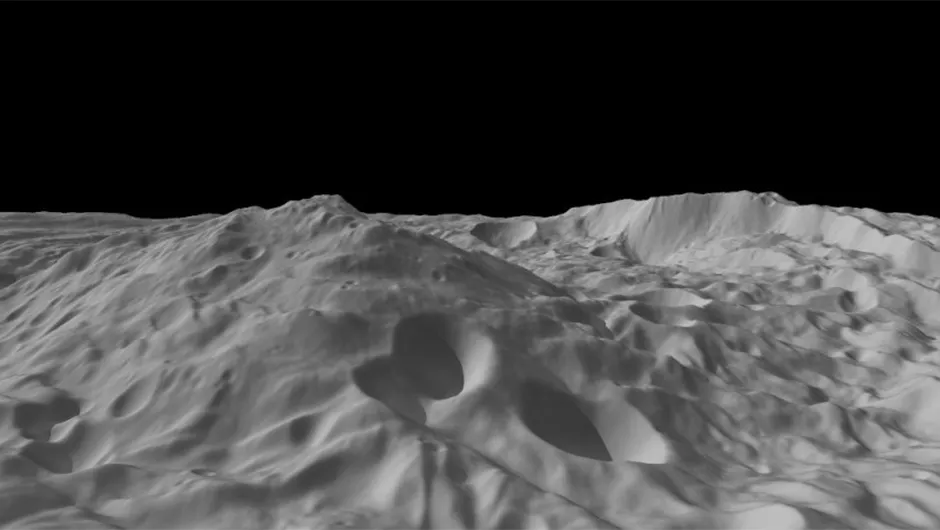
Water puzzle
On top of this finding, scientists were surprised to see a lot of water-rich materials on Vesta’s surface, particularly in older terrains.
That’s odd as it was previously thought that without the protection of an atmosphere, Vesta was too warm to hold on to any water.
Meteorites from Vesta are known to be richer in carbon than one would expect.
One explanation is that the carbon and water-rich material could have come from outside Vesta, possibly when it was struck by two massive chunks of debris from much further out in the Solar System.
With its mission complete, Dawn left Vesta on 4 September 2012 and headed for Ceres.
When it approached the dwarf planet in 2015 the spacecraft spotted hundreds of curious bright spots glinting on its surface.
The spots were mostly concentrated in and around impact craters, particularly the large Occator crater.
Analysis showed that the bright spots are made from sodium carbonate, which astronomers believe is evidence of an ancient ocean beneath the crust in the process of freezing.
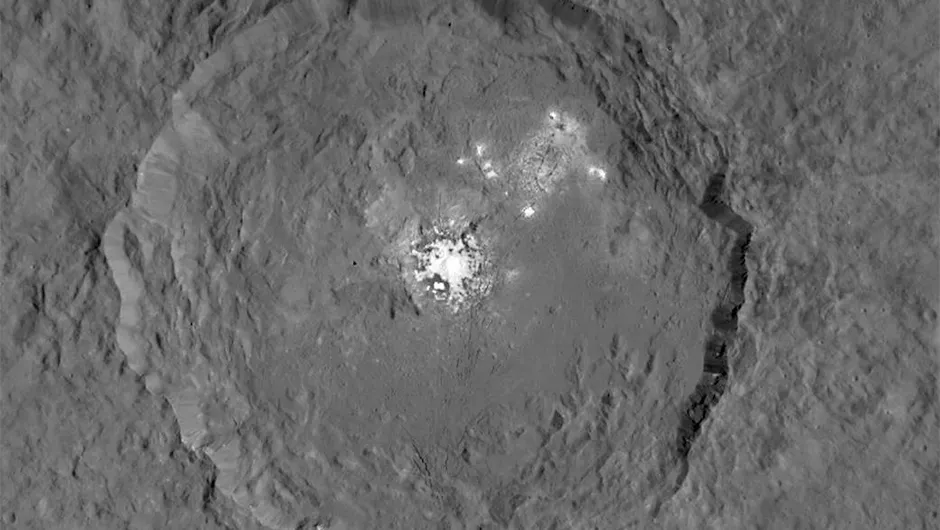
“Ceres once hosted a global ocean until it froze,” explains Raymond, “leaving carbonates in the shallow subsurface that form bright spots when exposed by impacts.
The majority of the bright spots are due to these crustal salts, which have been exposed by landslides and small impacts.
“However, those spots found inside the Occator crater have a different origin.
They are produced by the extrusion of briny [salty] liquid from Ceres’s interior.
When the water evaporates it leaves behind a salty deposit.”
Scientists think this liquid is being forced up from a magma chamber below, making Ceres volcanically active, though not in the classical sense.
Instead of rock, these ‘cryovolcanos’ are made from salt and mud, which erupts as briny water.
Only one, Ahuna Mons, is currently active.
There could have been several other cryovolcanos in Ceres’s past, but geologists are still interpreting the data.
Another remarkable discovery relates to the origin of Ceres.
Its chemistry suggests that it didn’t form in the asteroid belt, but further out in the Solar System, before migrating inwards.
“Its ammonia-rich clays indicate that the dwarf planet actually formed in a colder environment than where it currently resides,” says Raymond.
“Ceres is similar in bulk composition to many moons of the giant planets, like Europa and Enceladus.
In fact, similar salts have been found on Ceres and in the plumes of Saturn’s moon Enceladus.
This means it may be related to those icy moons.”
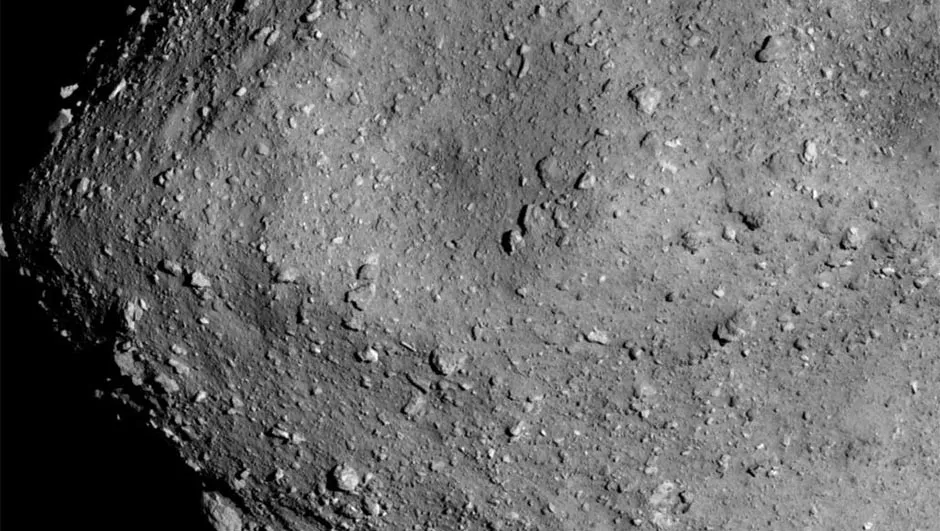
What’s lurking in the deep?
So studying Ceres may also help us learn more about these moons, whose structures and internal compositions are hidden by ice.
Scientists are particularly interested in learning about the environmental conditions in their deep oceans – and now in Ceres’s too – as they contain two of the main ingredients thought necessary for life: water and organic carbon compounds.
However, according to Raymond the chance of life forming on Ceres is quite unlikely.
“Small dwarf planets like Ceres are not expected to have been warm long enough for complex organic molecules to develop,” she says.
But that does not totally discount the possibility of life growing on, or in, the dwarf planet.
“The Dawn data suggest Ceres’s early ocean was habitable.
That is, it could sustain conditions suitable for life if life were introduced in its interior, for example via material ejected from Earth by large impacts.”
After a decade of discovery, Dawn has approached the end of its mission and run out of the hydrazine fuel that powers the thrusters.
But in June 2018 the team still had enough left to alter Dawn’s orbit so that it skimmed 34km above the surface of Ceres – 10 times closer than the spacecraft had ever been before.
Here the cameras and instruments could send back the most detailed photos of the world yet.
This includes recording gamma rays and neutron spectra, which will tell scientists more about the chemical makeup of Ceres’s uppermost layer, including how much water it contains.
But now the mission has drawn to a close.
Without thrusters to control its movements and orientation, Dawn won’t be able to point its scientific instruments at Ceres, or direct its antenna toward Earth to communicate.
However, the probe will orbit around Ceres for at least 50 years.
Perhaps a future mission will return to Ceres and be able to watch Dawn rising up over the horizon.
Dawn’s mission timeline
27 September 2007
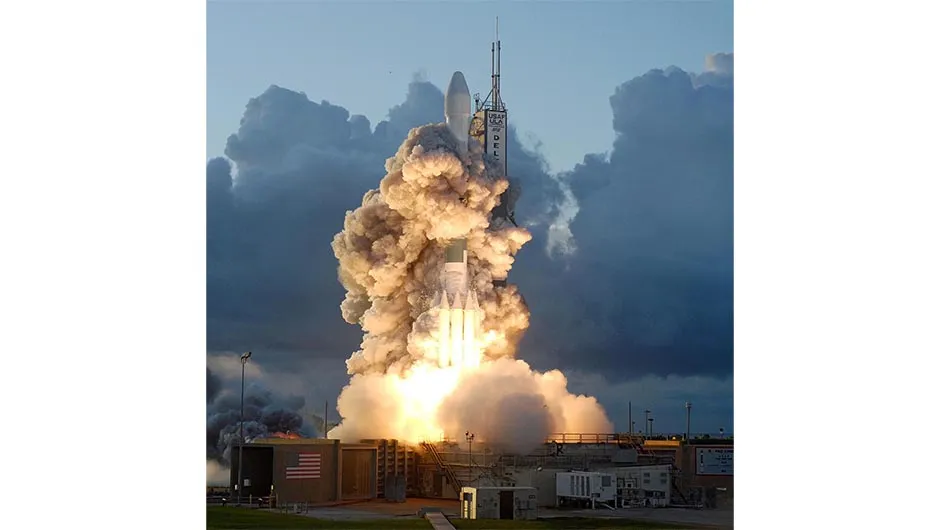
NASA’s Dawn spacecraft is launched from Cape Canaveral Air Force Station, Florida on a Delta 7925H rocket and starts its four-year journey to the asteroid belt.
February 2009
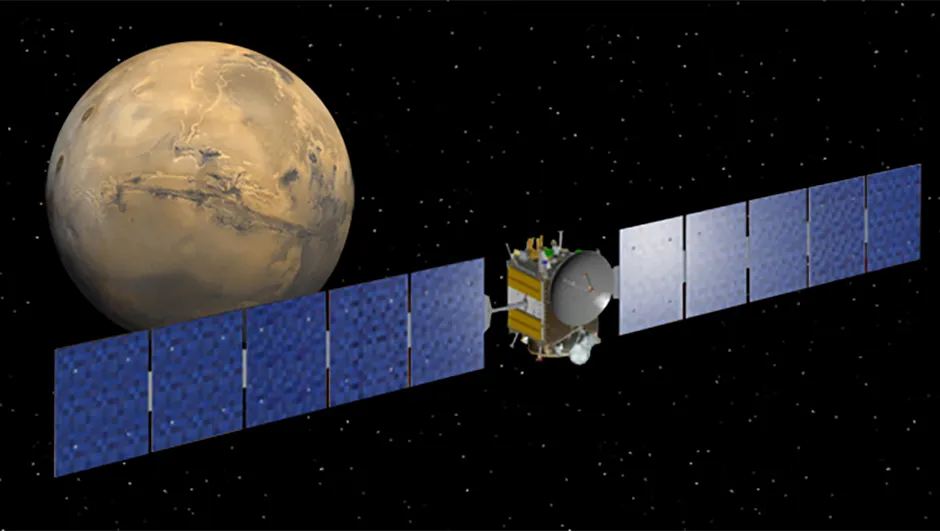
Dawn uses the power of Mars’s gravity to slingshot onwards to Vesta and Ceres.
July 2011
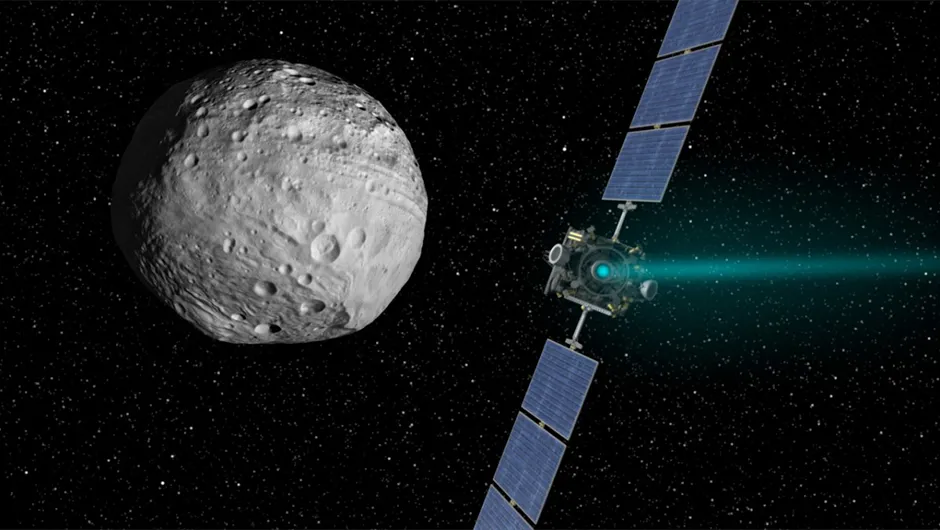
Dawn arrives at Vesta and enters orbit around the asteroid.
30 August 2012
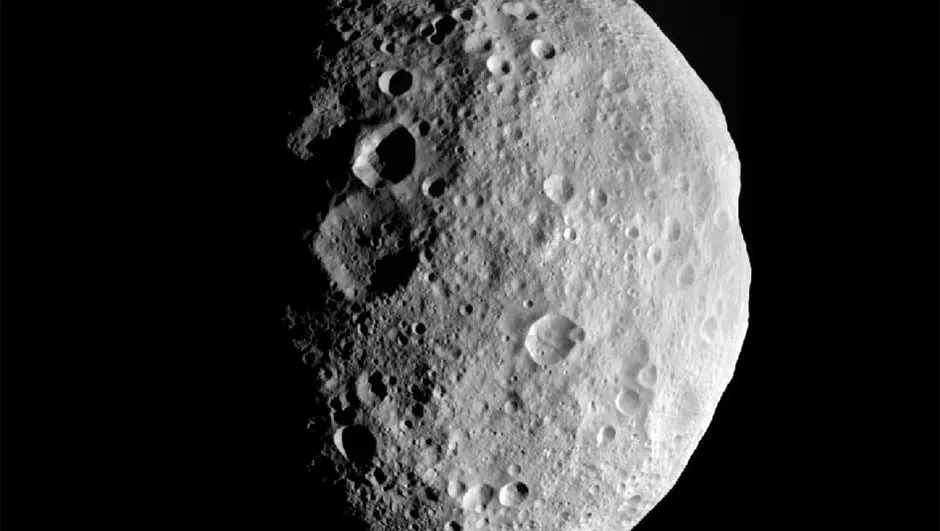
Dawn leaves Vesta to head to Ceres, and takes a goodbye photograph of Vesta (above) as it leaves.
February 2015
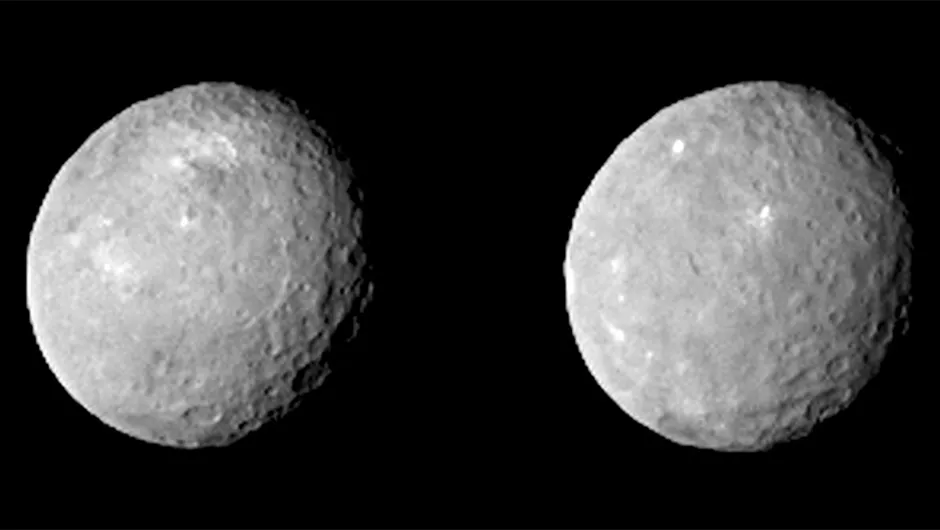
Dawn gets closer to Ceres; its cameras pick up mysterious bright spots on the dwarf planet’s surface.
March 2015
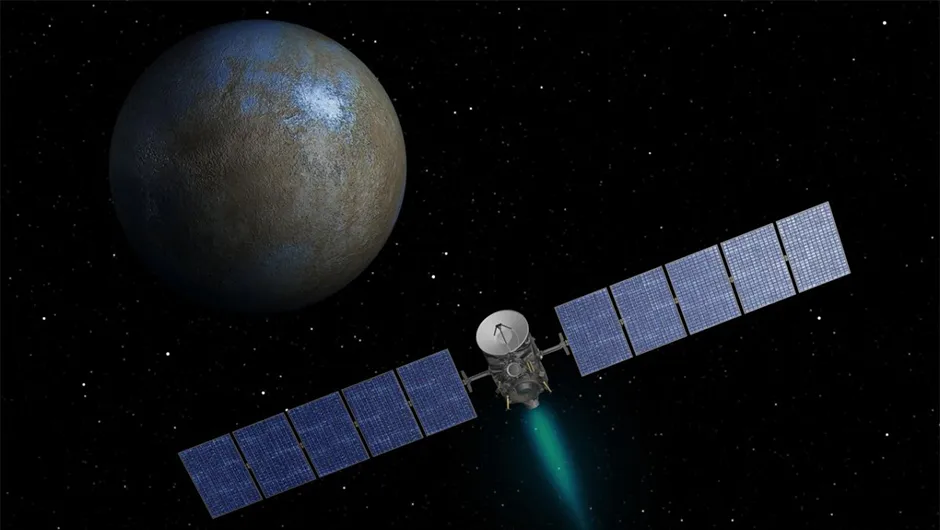
Dawn arrives at Ceres initially entering a polar orbit and obtaining its first full topographic map.
19 October 2017
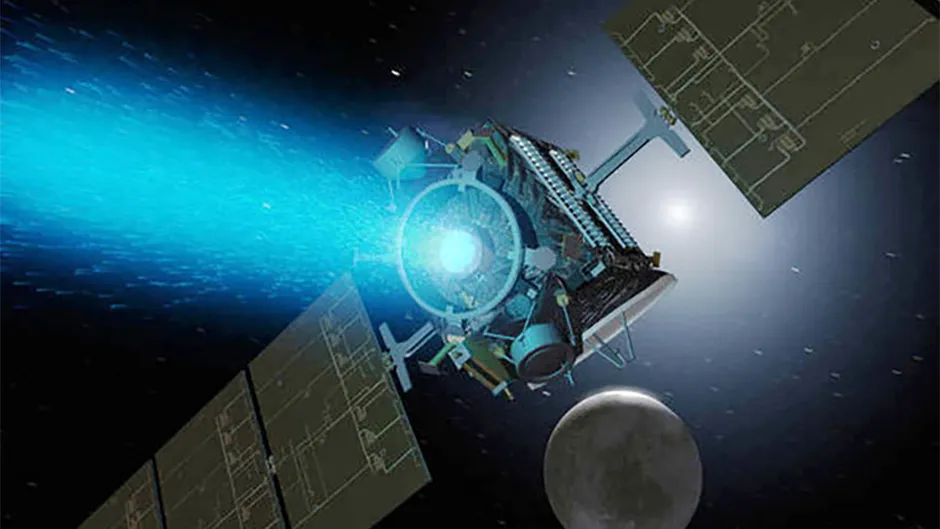
NASA announces that the mission will be extended until Dawn’s hydrazine fuel runs out.
June 2018
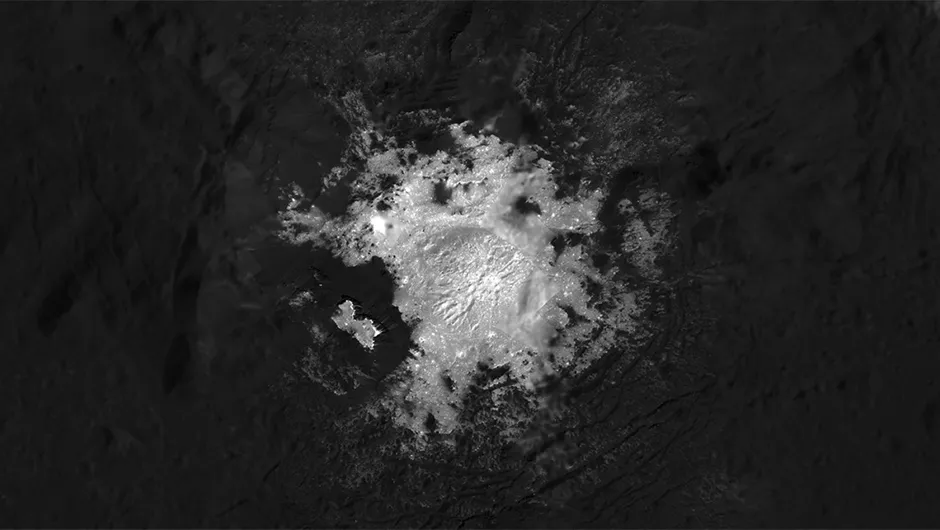
Dawn conducts its final orbit of Ceres, flying as close as 35km above its surface and as far away as 4,000 km.
The above image is a mosaic of Cerealia Facula in Occator Crater from images captured by Dawn during its 34km close approach.
What next?
The missions in the pipeline to visit other asteroids, building on Dawn’s legacy.
Hayabusa2
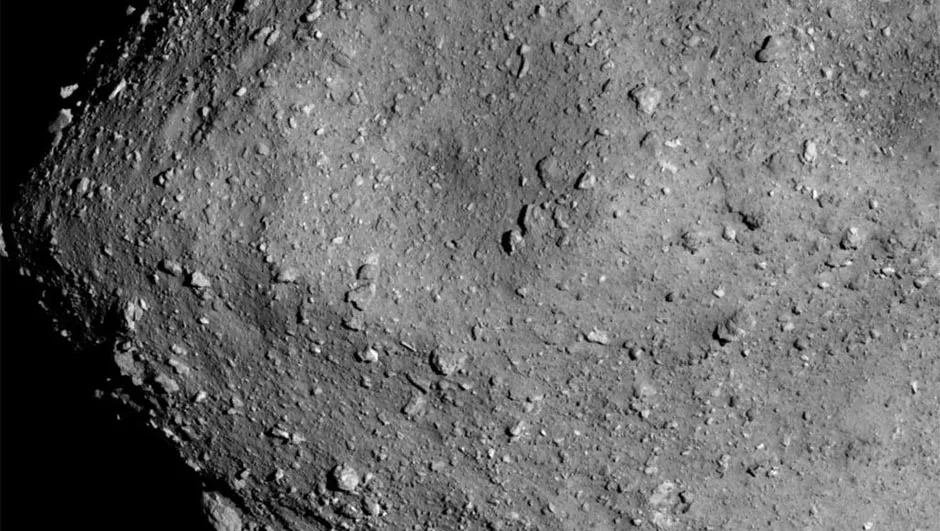
The Hayabusa2 spacecraft was launched in 2014 by the Japan Aerospace Exploration Agency (JAXA) in order to study the asteroid Ryugu.
It arrived in late June and captured this image of Ryugu from an altitude of 6km on 20 July 2018.
It willstay for 18 months: during this time its operators will land a small probe and three miniature rovers, while the main spacecraft takes samples to return to Earth.
The mission will depart from Ryugu in December 2019, arriving home in 2020.
OSIRIS-REx

NASA’s OSIRIS-REx launched on September 8, 2016 from Cape Canaveral Air Force Station, and will travel to near-Earth asteroid Bennu.
On 17 August 2018 the spacecraft captured its first photograph of Bennu (above) from a distance of 2.2 million km and is due to arrive at its destination on 3 December.
The craft will then survey the space rock before returning to Earth with its asteroid samples in 2023.
Lucy
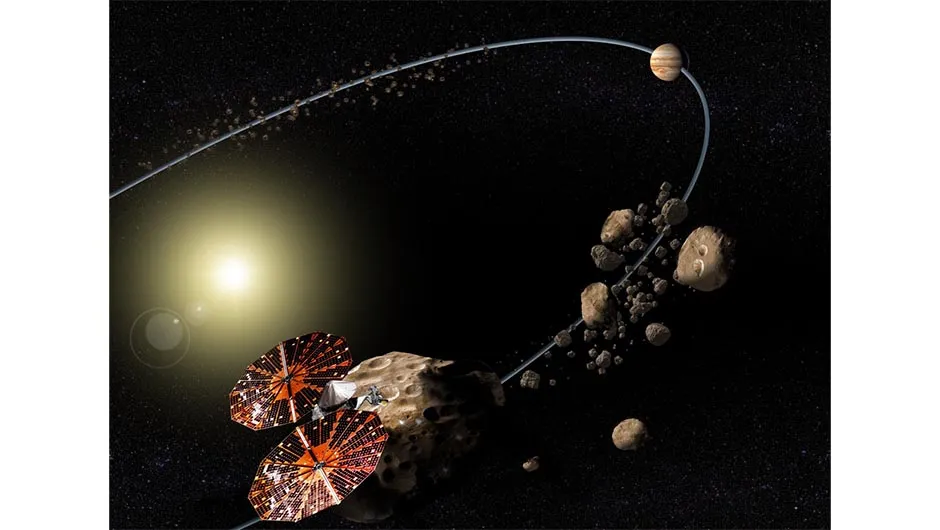
NASA’s Lucy mission will perform the first close-up investigation of the Trojans, a population of primitive asteroids orbiting close to Jupiter.
The Trojans are remnants of the primordial material that formed the outer planets, and they hold vital clues to understanding the history of the Solar System.
Lucy will launch in 2021 and fly by six Trojans and one main belt asteroid between 2025 and 2033.
Psyche
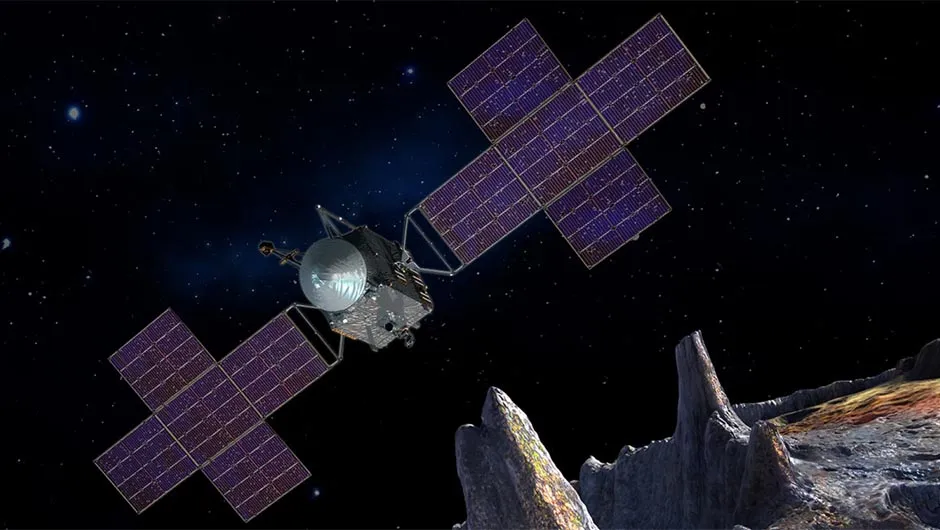
NASA’s Psyche mission will study a unique target: a 210km-wide metallic asteroid, the only known object of its kind in the Solar System.
It’s thought to be the exposed core of a planet that was destroyed before it had finished forming thus giving astronomers a window into planetary cores, which are usually hidden from view.
Psyche is scheduled to launch in October 2023 and arrive at the asteroid in 2030.